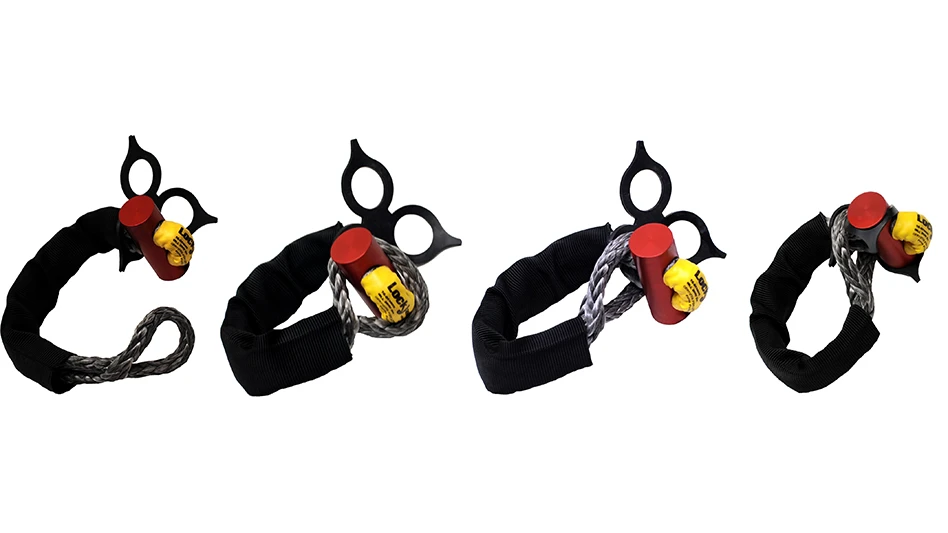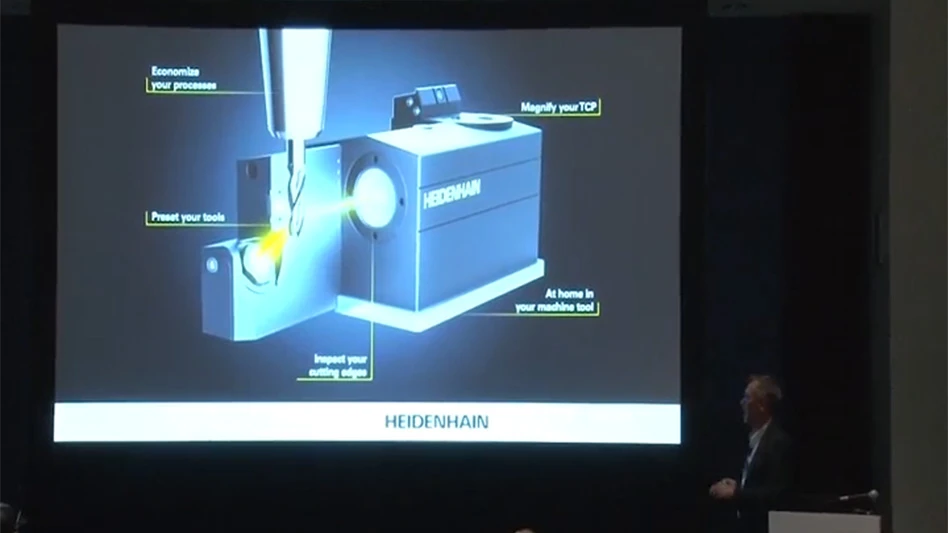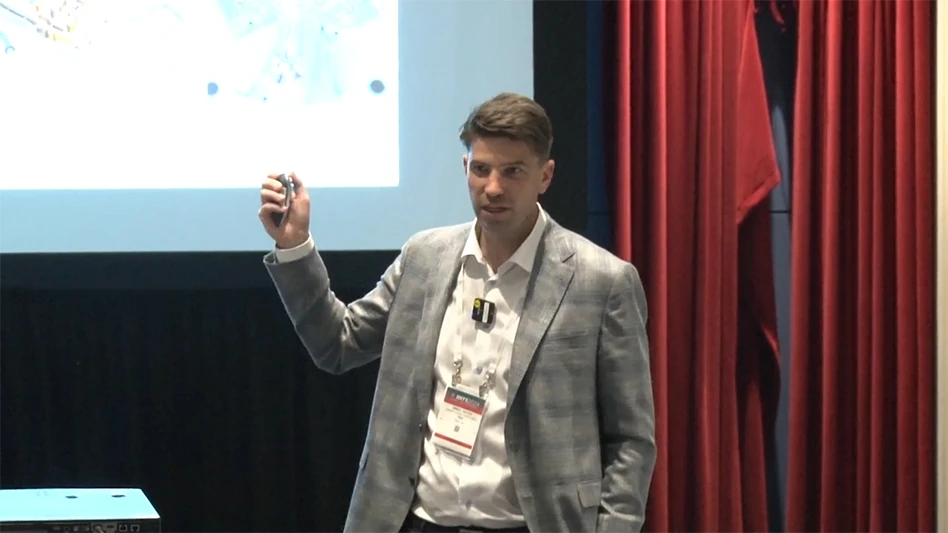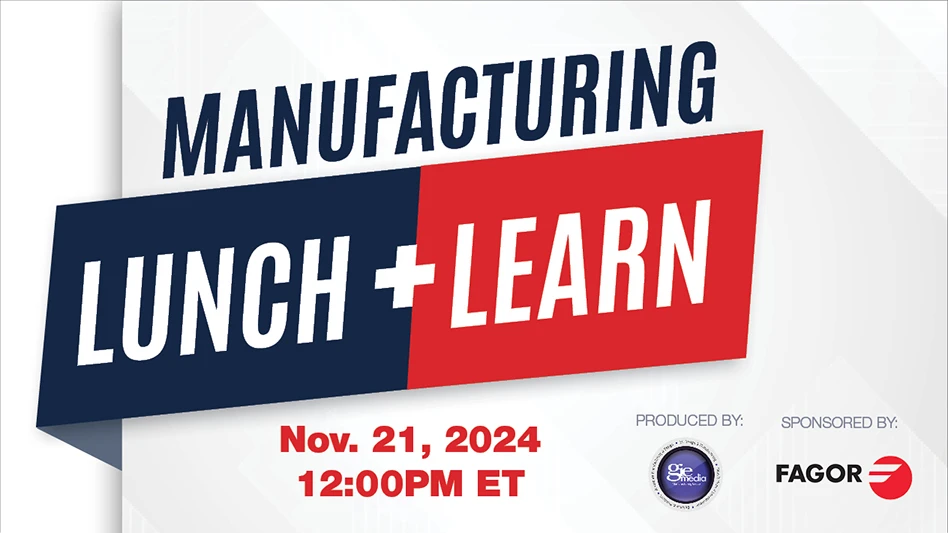
Analyst panel – rebooting the supply chain. Left to right: Michael Black, managing director, 1st Hill Partners; Kevin Michaels, president, AeroDynamic Advisory; Richard Aboulafia, vice president analysis, Teal Group; Ron J. Epstein, aerospace and defense analyst, Bank of America - Merrill Lynch.
Lynnwood, Washington – The Pacific Northwest Aerospace Alliance (PNAA) opened its 17th annual conference by offering a glimpse at transformational technologies changing the way aerospace companies do business. More than 600 attendees from the Seattle-area aerospace cluster and from around the world heard presentations on the dynamics impacting the relationship between original equipment manufacturers (OEMs) and suppliers, locally and globally.
Kevin Michaels, president, AeroDynamic Advisory, discussed vertical integration among the OEMs, examining where it makes sense for them to bring capabilites in-house after years of outsourcing. Aerostructures, aircraft mechanical and electrical systems, interiors, and landing gear offer the most rewards, Michaels argues, but engines, wheels and brakes, and avionics have risks in increased fixed costs, alienating suppliers and customers, and stifling innovation.
Randy Tinseth, Boeing Commercial Airplane’s vice president of marketing, shared the company’s current market outlook, noting that anticipated 5% to 6% growth in air travel in Asia will fuel continued demand for new aircraft. He foresees the need for 41,030 new jetliners valued at $6.1 trillion.
Tinseth noted that airliner programs such as the 737 MAX and 777X were ahead of schedule, with the company having a backlog of 5,800 aircraft valued at $400 billion – an estimated 7 years’ worth of production. Tinseth reaffirmed Boeing’s plans to increase production of its 737 single-aisle jet from 47 to 52 per month by the end of 2018, ramping up to 57 per month in 2019.
Don Larsen, vice president and general manager of research and development and advanced manufacturing for Arconic, explored the contributions that 3D printing and additive manufacturing are making in aerospace applications. Advantages such as part reduction, being able to produce complex geometries, and speed to market must be balanced by the knowledge that achieving optimal results requires more than adding metal powder to a machine and pressing the start button. Larsen explained how, by changing the process and stock machine parameters, along with some post-production processes, Arconic engineers are able to reduce porosity and produce higher yield strength in powder-metal additive parts.
A panel of noted industry analysts (see photo above for participants) discussed challenges facing the supply chain in light of announced mergers and acquistions, competition from China, and partnerships among the duopolies and regional jet makers.
Bank of America - Merrill Lynch aerospace and defense analyst Ron Epstein believes that Airbus’ partnering with Bombardier on C Series jetliner production could lead the Canadian transportation company to shed regional jet construction altogether, allowing it to focus on its rail transport and business jets.
Epstein and others noted the significant political and nationalistic headwinds that could prevent Brazilian regional jet maker Embraer from becoming part of Boeing. However, partnership opportunities exist, Epstein says, as Boeing could be ramping up development of a middle-market jetliner just as Embraer ends development work on its E2 series jets.
The PNAA conference continues through Feb. 15, 2018, and features a trade show and B2B meetings. Aerospace Manufacturing and Design is a media sponsor.
Latest from Aerospace Manufacturing and Design
- Molex to acquire AirBorn
- Nano Dimension's Exa 250vx digital light processing (DLP) 3D printer
- IMTS 2024 Booth Tour: Fagor Automation Corp.
- How Robotics and Automation are Transforming Manufacturing
- Wichita State’s NIAR delivers fiber metal laminate test panel to FAA
- Walter's PCD milling cutters
- IMTS 2024 Booth Tour: Marubeni Citizen-Cincom, Inc.
- Mazak celebrates 50th anniversary in Kentucky





